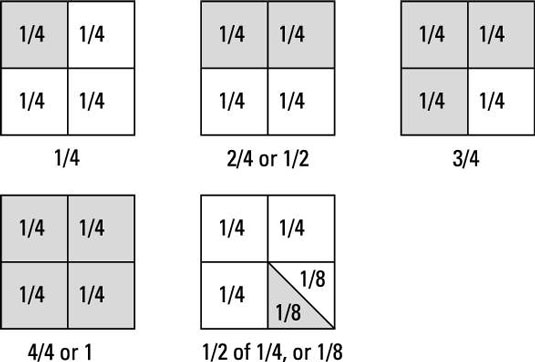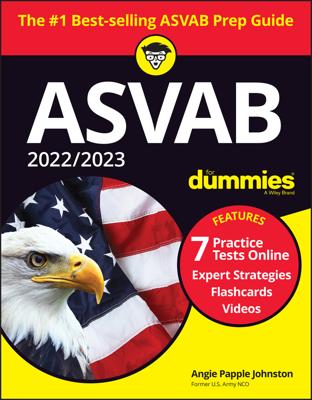You will need to have a firm grasp on fractions for the ASVAB. Most people don’t like to do math with fractions. Maybe it’s because teachers always used pies as examples, and that just makes you hungry.
A fraction is nothing more than part of a whole.

Each shaded area represents part of a whole, or a fraction of the whole. It doesn’t have to be fourths. If you divide the cardboard into two equal pieces, each shaded area would represent one-half. If the cardboard were cut into three equal pieces, each piece would be one-third of the whole.
Fractions aren’t difficult to work into your mathematical skills as long as you remember a few rules and techniques.
The top number of a fraction is called the numerator. The bottom number is known as the denominator. For example, in the fraction 7/16, 7 is the numerator, and 16 is the denominator.
You may also see numerators and denominators separated by a / sign rather than one on top of the other, like 1/4.
If the numerator is smaller than the denominator, the fraction is less than a whole (smaller than 1). This kind of fraction is called a proper fraction. The fraction 3/16 is a proper fraction, as is 1/3.
If the numerator is larger than the denominator, the fraction is larger than a whole (larger than 1), and the fraction is called an improper fraction. The fraction 17/16 is an improper fraction.
Converting improper fractions to mixed numbers is customary in math, especially after all mathematical operations are complete. A mixed number is a whole number plus a fraction.
The easiest way to convert an improper fraction to a mixed number is to divide the numerator by the denominator. You convert 17/16 to a mixed number by dividing 17 by 16: 17 ÷ 16 = 1, with a remainder of 1, so the improper fraction converts to

